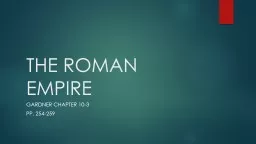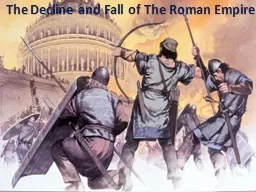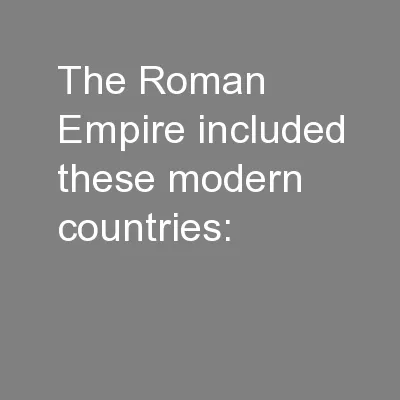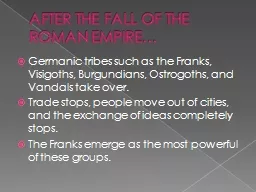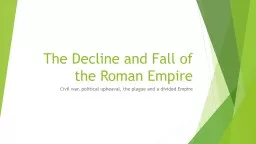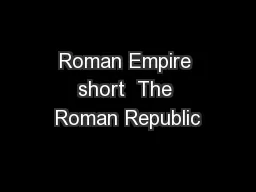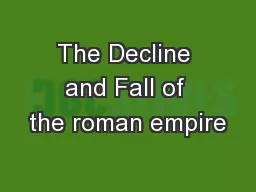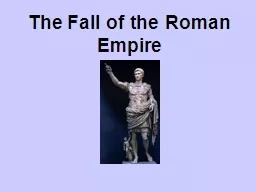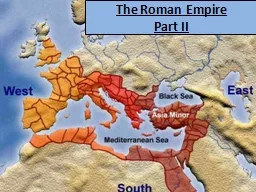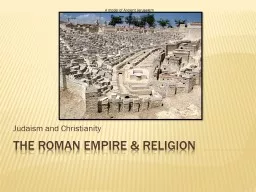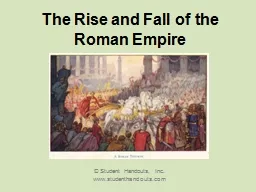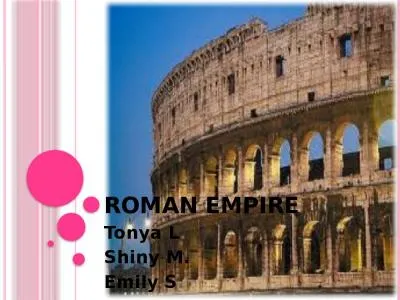PPT-THE ROMAN EMPIRE GARDNER CHAPTER 10-3
Author : desiron | Published Date : 2020-06-15
PP 254259 EARLY EMPIRE Murder of Julius Caesar in 44 BCE leads to civil war Octavian the nephew and adopted son of Julius Caesar wins the civil war by crushing the
Presentation Embed Code
Download Presentation
Download Presentation The PPT/PDF document "THE ROMAN EMPIRE GARDNER CHAPTER 10-3" is the property of its rightful owner. Permission is granted to download and print the materials on this website for personal, non-commercial use only, and to display it on your personal computer provided you do not modify the materials and that you retain all copyright notices contained in the materials. By downloading content from our website, you accept the terms of this agreement.
THE ROMAN EMPIRE GARDNER CHAPTER 10-3: Transcript
Download Rules Of Document
"THE ROMAN EMPIRE GARDNER CHAPTER 10-3"The content belongs to its owner. You may download and print it for personal use, without modification, and keep all copyright notices. By downloading, you agree to these terms.
Related Documents

